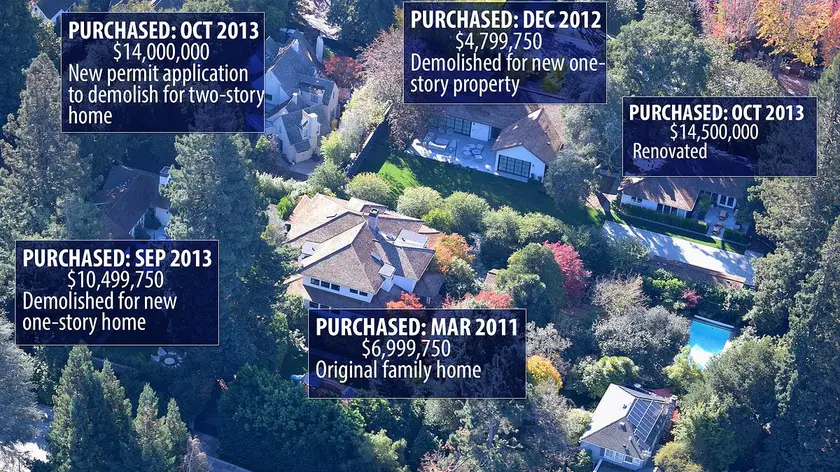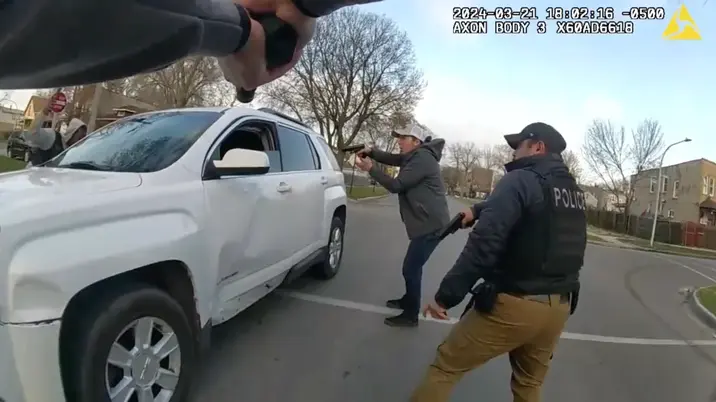T4K3.news
Neighborhood tensions spark debate in Palo Alto
A private compound raised questions about zoning, permits and community impact in Palo Alto's Crescent Park.

A profile outlines how a private estate built around a billionaire’s home reshaped Palo Alto’s Crescent Park and sparked debates over governance and community life.
How Mark Zuckerberg upended a quiet California neighborhood to maintain his own private paradise
Since moving to Crescent Park in 2011, Mark Zuckerberg and Priscilla Chan have spent more than $110 million to buy at least 11 nearby homes, turning several into a private compound with guest houses, lush gardens, a pickleball court and a pool. They also added about 7,000 square feet of underground space, described by neighbors as bunkers, and placed a seven-foot statue of Chan at the center of the estate. City records show 56 permits for these properties, and neighbors say the project moved forward despite concerns about scale and impact on the surrounding streets.
A 2016 decision by Palo Alto’s Architectural Review Board to block demolition of four homes was not the end of the story. The Zuckerbergs continued development at a slower pace, one or two houses at a time, while maintaining a visible security presence and broad access to the property for events. Neighbors report disruptions to daily life, including blocked driveways, construction debris, and vehicles parked at neighbors’ homes. Security cameras were said to face toward nearby properties and guards would sometimes monitor visitors on public sidewalks. City officials say the work complies with code and that no special favors were granted, though some residents and council members argue that the project reveals gaps in oversight and a risk to neighborhood character.
Key Takeaways
"No neighborhood wants to be occupied"
A neighbor describes the impact of the estate on local life
"He's been finding loopholes around our local laws and zoning ordinances"
A Palo Alto council member comments on zoning and oversight
"They value being members of the community and have taken a number of steps above and beyond any local requirements"
Spokesperson for Zuckerberg and Chan defending the approach
"The city does not regulate who can buy nearby or adjacent properties, whether on the open market or privately"
City official detailing permit rules
The Palo Alto case tests a core question for fast-growing cities: how to balance private wealth with public space. When a single property cluster reaches the scale of a small neighborhood, questions about transparency, zoning and community accountability rise quickly. Officials insist the process followed the letter of the law, but critics argue that loopholes and the sheer pace of purchases tilt the balance toward one household. The episode may push policymakers to tighten rules or rethink oversight so that dwellers and nonresidents share streets and sidewalks more equitably. The tension is not just about a gate or a gatekeeper; it is about what kind of town Palo Alto wants to be as wealth concentrates and public space shrinks.
Highlights
- Neighborhoods belong to the residents who live there
- Public streets should not become private fortresses
- Power should not redraw a town daily life
- A city is judged by how it treats quiet streets
Neighborhood tensions may invite political backlash and policy scrutiny
The case highlights potential budgetary and governance challenges as wealth concentrates and oversight is tested. It raises questions about zoning, public space, and accountability that could trigger debates among residents, council members, and developers.
The neighborhood’s future will depend on how the city closes perceived gaps between law and daily life.
Enjoyed this? Let your friends know!
Related News

City Council rejects Dexter Reed settlement proposal

Palo Alto Acquires CyberArk for $25 Billion

Cricket sends mixed signals over on-field conduct

Trump threatens federal takeover of Washington after carjacking incident

Mexico City unveils housing plan to address gentrification

Brewery owners implement child bans due to disruptive behavior

Plans to remove controversial mermaid statue in Copenhagen

WWE Unreal Docuseries Launches to Mixed Reactions
